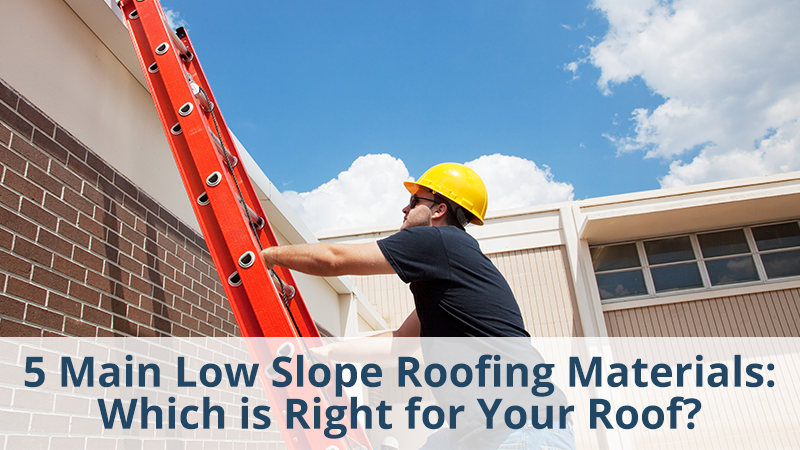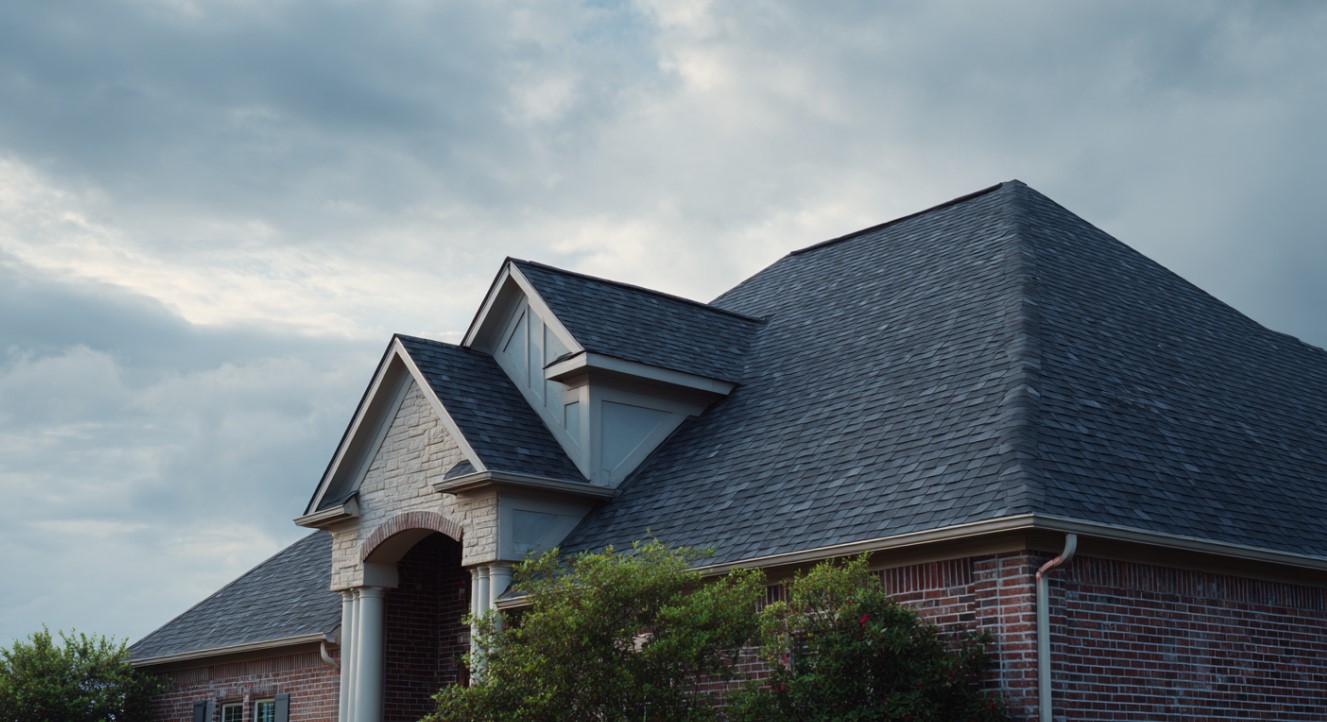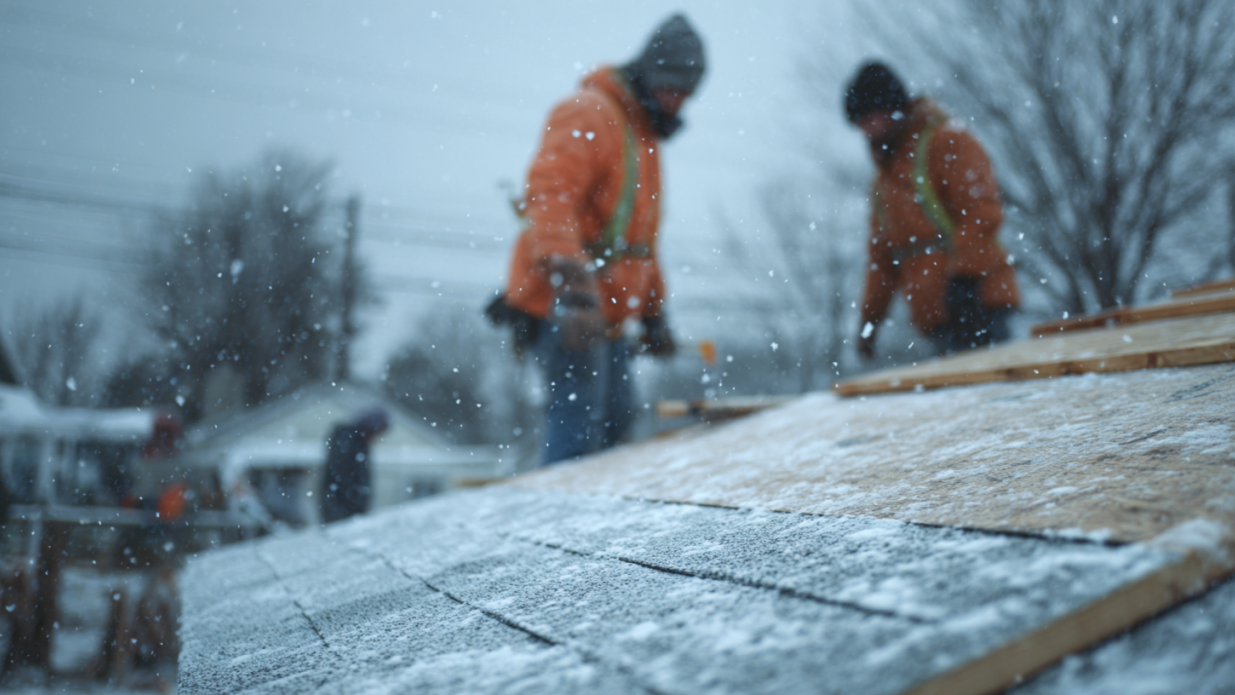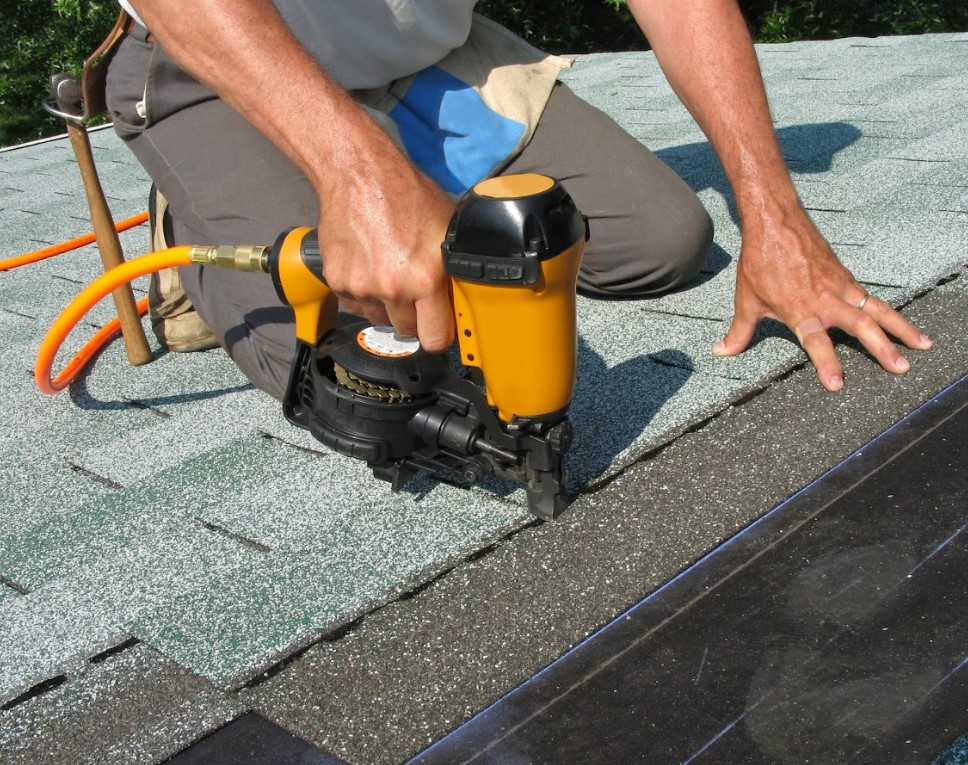Low slope or flat roofs — where the slope rises less than four inches in a run of 12 inches — require special systems to prevent leaks. Whether the roof protects a giant industrial building or your home, you want to choose the best system for your structure. Most low-slope roofs are now built or re-covered with one of four main material types, TPO, PVC, EPDM or Modified Bitumen, while Built-Up declines in popularity.
TPO
A relative newcomer to roofing, Thermoplastic Polyolefin (TPO) is a single-ply membrane with many excellent qualities. As a plastic, the seams can be heat welded for extreme durability. When considering high Georgia temperatures and direct sunshine on your roof, you can choose TPO in white for its reflectivity and ability to keep the interior of the building cooler than black or other dark hues. It holds up well in weather and offers flexibility to withstand building settlement and thermal expansion/contraction. With a tough hide, TPO resists punctures and, while not impervious, stands up well to moderate hail.
PVC
Before there was TPO, Polyvinyl Chloride (PVC) reigned in the single-ply roofing market. With similar qualities as TPO, architects and building professionals found PVC a good alternative to tar and gravel systems (otherwise known as built-up roofing, or BUR). Also, bendable and capable of heat welding, plus cool roof qualified, its main advantage over TPO comes from its ability to withstand a larger range of chemicals. PVC makes a great membrane roof covering for restaurants that vent the kitchen to the roof.
EPDM
A modified rubber material, Ethylene Propylene Diene Terpolymer (EPDM) brings several great qualities to any flat roof system. Supremely flexible, EPDM can withstand decades of hot/cold cycles and differential settling of the building without difficulty if fully adhered. Chemically inert, EPDM can withstand nearly any chemical. In fact, this is the same material used to line leach pits and retention ponds. Although the most-used color is black, EPDM comes in white, as well. Of all the single-ply membranes, EPDM can handle hail the best. Also, as a rubber product, EPDM easily resists punctures under ordinary conditions; however, gravel embedded in boot soles can cut the membrane, so it may not work well where there will be heavy foot traffic.

Modified Bitumen
Another single-ply material is modified bitumen, also known as Atactic Polypropylene (APP) or “mod bit.” An asphalt product, modified bitumen costs less than the plastics and rubber membranes and holds up quite well as long as the roof never sustains pooling water. Options include torch-down — where the crew melts the back with a torch as they roll it out — or peel and stick self-adhering membrane. As the most up-front economical choice, it also will require replacement more often. Mod bit also comes in many color options, so you can often match a sloping porch cover to your pitched roof’s shingles.
Built-Up Roofing
Built-up, or tar and gravel, roofing served well for over a century. It comprises several layers of reinforced felt, or scrim, adhered with hot liquid asphalt, then covered with pea gravel for UV protection. As a roof system, it has proven itself quite durable and hail proof. But, BUR requires the use of a kettle to melt the asphalt. Therefore you take on considerable risks when choosing this system. However, for very large low slope roofs, built-up can save your budget and last far longer than any of the single-ply materials.
Need help choosing your low slope materials? Talk to us at Rosie’s Roofing and Restoration. We’re a locally-owned and operated roofing company in Atlanta with over 30 years of experience. Whether you need roof repair or a complete roof installation, we have the solution for you. Call today!




